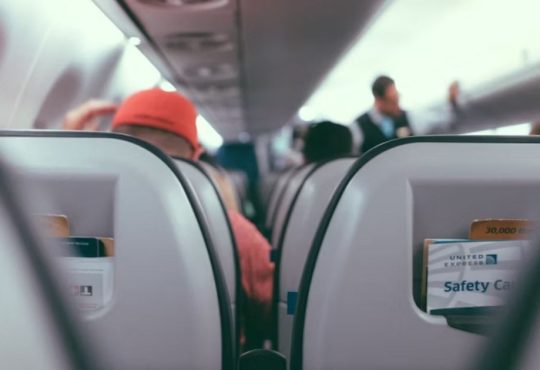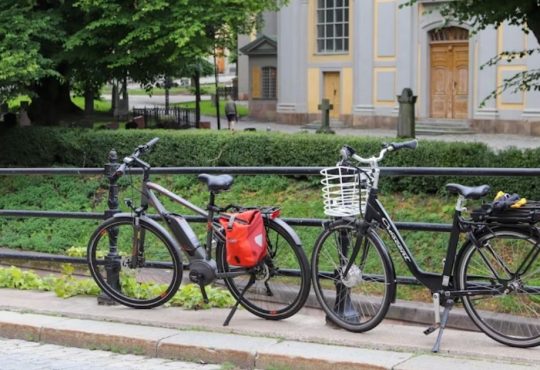Travel today goes beyond checking off destinations or capturing picture-perfect moments. The focus has shifted toward meaningful, individualized experiences that reflect a wide range of identities, values, and needs. This evolution emphasizes diversity, inclusion, and authentic engagement with local cultures, transforming travel into a more human-centered and socially conscious pursuit.
This conversation explores the exciting shift toward personalized travel and inclusivity—two powerful trends that are changing the way we see and experience the world. By tailoring trips to individual preferences and celebrating diverse identities, travel becomes more meaningful not just for explorers, but also for the communities they visit. We’ll also look at practical ways travel providers, policymakers, and other key players can help create a future of travel that’s more personal, more welcoming, and built for everyone.
How Travel’s Changing: From Crowds to Truly Personal Adventures
Travel has long mirrored the prevailing social structures of its era. Historically reserved for elites—explorers, nobility, merchants, or those driven by necessity—travel reflected power, privilege, and purpose. The concept of leisure travel remained out of reach for most until the 20th century, when innovations such as commercial air travel and package tours made distant destinations more accessible. This era of mass tourism democratized travel but often did so at the expense of individuality.
Standardized itineraries, uniform accommodations, and overcrowded landmarks became hallmarks of the mass tourism model. Designed for convenience and cost-efficiency, this approach prioritized broad appeal over personal relevance. The uniqueness of travelers—their stories, preferences, and cultural identities—was largely overlooked. In contrast, the current digital age has ushered in a transformative shift. Personalization now shapes the travel experience, allowing journeys to reflect individual passions, whether through culinary expeditions, wellness escapes, or ancestral discoveries. This evolution emphasizes depth over distance, underscoring the importance of honoring diverse perspectives, needs, and identities at every stage of the journey.
What Does Inclusive Travel Mean?
Inclusive travel represents a critical shift in how access, identity, and equity are integrated into global exploration. Rather than serving as a trend or marketing term, it functions as a necessary redefinition of travel norms, aimed at dismantling long-standing barriers that have prevented many from fully participating in and benefiting from travel experiences. The goal is to cultivate environments—both physical and cultural—where safety, respect, and recognition are foundational.
Accessibility within inclusive travel extends beyond infrastructure. Cognitive accessibility encompasses intuitive communication, streamlined booking processes, and inclusive accommodations for individuals with neurodiversity. Cultural accessibility ensures visibility and respect for travelers across racial, ethnic, and religious lines. Economic accessibility introduces affordability through alternative models such as community-based tourism, flexible pricing, and off-peak travel options. Gender and identity inclusivity prioritizes safety and recognition for LGBTQ+ individuals, solo travelers, and those outside the gender binary. This reimagining of travel emphasizes the need for a holistic, equity-driven approach in everything from destination design to policy development, ensuring that all individuals can explore the world with dignity and freedom.
The Intersection of Personalization and Inclusion
When integrated effectively, personalization and inclusion function as complementary forces—each reinforcing the impact of the other. Personalization addresses individual preferences, identities, and requirements, while inclusion ensures these elements are acknowledged, respected, and thoughtfully accommodated throughout the travel experience.
For example, an itinerary designed for a wheelchair user with a passion for wildlife photography would extend beyond basic accessibility. It would incorporate adapted safari vehicles, trained guides, and tailored opportunities that align with both physical needs and creative goals. Similarly, inclusive planning for an LGBTQ+ couple visiting a conservative region would involve more than safety considerations; it would include culturally aware guides and experiences that foster comfort, respect, and genuine connection. In this way, inclusive and personalized travel transcends mere functionality, offering a deeper engagement and greater joy.
Why Diversity in Travel Matters
Travel isn’t just about going places—it’s about connecting with people, expanding perspectives, and challenging assumptions. When diversity is celebrated in tourism, it enriches not only the traveler’s experience but also the communities they visit.
1. Cultural Exchange and Understanding
Inclusive travel unlocks doors to more authentic interactions. Rather than curated performances for tourists, travelers gain access to the lived realities of locals—their stories, cuisines, rituals, and worldviews. These exchanges cultivate empathy, dissolve prejudice, and create lasting memories that mass tourism could never offer.
2. Economic Benefits for Local Communities
Models like community-based tourism give marginalized or underrepresented groups a stake in the tourism economy. Instead of profits flowing to large corporations, the benefits stay local—funding schools, preserving traditions and strengthening community resilience. This is tourism with a conscience.
3. Personal Growth and Empowerment
For many travelers, especially those from historically excluded groups, having access to personalized and inclusive experiences can be transformative. Imagine the confidence boost of exploring the world without fear of judgment or danger. It’s empowering to feel seen, respected, and free to explore on your terms.
4. Challenges to Personalized and Inclusive Travel
While the vision of a fully inclusive and personalized travel experience is inspiring, several hurdles stand in the way. One of the most pressing is infrastructure. In many parts of the world, accessible ramps, elevators, tactile pathways, and assistive technologies are still sorely lacking, making it difficult or even impossible for travelers with mobility challenges to engage with their destinations fully. And it’s not just physical barriers; digital infrastructure, like accessible websites or booking platforms, often falls short of meeting diverse user needs.
Another critical issue is the lack of awareness and training within the travel and hospitality industry. Many frontline workers are unequipped to meet the needs of diverse travelers, not out of malice but due to a lack of proper education in cultural competency, disability etiquette, or inclusive customer service. Economic barriers also come into play—customized, inclusive travel experiences may come with a higher price tag, making them less accessible to budget-conscious travelers or those in under-resourced regions.
Cultural sensitivity presents its own set of complexities. In destinations where certain identities, such as LGBTQ+ individuals or people of specific religious backgrounds, may not be openly accepted, travelers face risks that go beyond inconvenience. Lastly, the digital divide remains a persistent obstacle. Many personalization tools and travel aids rely on access to smartphones, the internet, or advanced tech resources that not all travelers can afford or use effectively. Bridging these gaps will require systemic change and ongoing global collaboration.
How Technology is Shaping Personalized and Inclusive Travel
Technology is rapidly becoming one of the most powerful catalysts for reshaping the travel experience into something more inclusive and tailored. Artificial Intelligence and Big Data, for example, are not just buzzwords—they’re reshaping how travel is curated. These tools analyze user behavior, preferences, and feedback to provide personalized suggestions for accommodations, destinations, or experiences that align with a traveler’s specific needs, whether that means step-free access, halal dining options, or sensory-friendly environments.
Virtual Reality (VR) is offering a groundbreaking new approach to planning. By allowing users to preview accommodations, tours, and even street layouts, travelers can make informed decisions based on real visuals rather than generic descriptions. Mobile apps like Access Earth and Wheelmap empower users to locate accessible venues. At the same time, platforms such as Beeyonder offer virtual tours led by guides with disabilities, shifting the narrative from passive inclusion to active leadership.
Social media plays a vital role by amplifying diverse voices and sharing authentic experiences, empowering travelers to seek more personalized and inclusive journeys. It connects communities and reshapes the approach to exploration. Niche traveler communities on platforms like Instagram, Reddit, and TikTok are swapping real-time advice and destination warnings, building a decentralized but highly effective ecosystem of crowd-sourced inclusion. Tools like live translation apps, voice-to-text, and GPS alerts are breaking down language and navigation barriers, boosting travelers’ confidence to explore more widely.
Practical Steps for Travelers
Inclusive travel begins with intentional choices. For those seeking to make their journeys more equitable and respectful, the first step is to conduct thorough research. Instead of relying solely on top-ten lists or mainstream travel sites, seek out resources created by diverse voices—like blogs from disabled travelers, queer globetrotters, or Indigenous-led tours.
Choosing brands that align with inclusive values is also key. Look for companies that have published accessibility statements, diversity hiring practices, or clear anti-discrimination policies. Travelers can also advocate through reviews and social media, helping to hold businesses accountable and spotlight those doing meaningful work in the space.
Thoughtful planning is essential—consider mobility, food sensitivities, neurodivergence, and cultural customs. Carrying printed guides in local languages, requesting accommodations in advance, or traveling with apps designed for specific needs can make a huge difference. Finally, respect is non-negotiable. Inclusive travel isn’t about making everywhere feel like home; it’s about honoring the people and cultures that make each place distinct while ethically navigating those spaces.
Role of Travel Industry and Policymakers
Creating a future of inclusive travel requires systemic change, and that responsibility lies heavily with both the travel industry and governing bodies. Investing in infrastructure isn’t just a nice-to-have—it’s a necessity. That means redesigning public transport, accommodations, and tourist attractions with universal access in mind, from tactile maps for the visually impaired to gender-neutral restrooms and multilingual signage.
Staff training is another critical piece. Cultural sensitivity, anti-racism, LGBTQ+ inclusion, and disability awareness should be core parts of employee onboarding in airlines, hotels, tour operations, and even immigration checkpoints. Marketing must also evolve—diverse representation in travel ads and influencer campaigns helps reflect the reality of who travels and who deserves to be seen.
But industry initiatives can only go so far without supportive legislation. Governments must enforce anti-discrimination laws within the tourism sector, offer grants or incentives to inclusive businesses, and establish standards for accessible design and development. Partnering with local communities ensures that tourism is not only inclusive but also sustainable, benefiting both visitors and hosts in meaningful and respectful ways.
Inspirational Examples of Inclusive Travel
Real-world examples show that inclusive travel isn’t just a concept—it’s already happening. The Disabled Travelers Network, for instance, offers a powerful example of community-driven support. Through shared reviews, travel hacks, and advocacy, they’re helping to create a global network of informed and empowered travelers.
Pink Tourism has also gained traction, promoting destinations that are not only safe but celebratory of LGBTQ+ identities. From Pride-friendly cities to queer-run bed-and-breakfasts, it shows how intentional hospitality can make a huge difference. Meanwhile, Indigenous tourism initiatives in places like Australia’s Northern Territory, New Zealand’s Māori-led tours, and Canada’s Indigenous-owned companies are reclaiming narratives, offering authentic cultural engagement without exploitation.
Cruise lines like Royal Caribbean and Holland America Line are also making strides, with ships equipped with wheelchair-accessible rooms, braille signage, and sensory-friendly activities. These innovations point to a travel future where inclusion is the rule, not the exception. The method helps prevent overwhelm while maintaining a sleek look.
Redefining the Journey
Final reflections on personalized and inclusive travel reveal a transformative movement reshaping the core of global exploration. This shift transcends conventional tourism, prioritizing active engagement over passive observation, inclusion over exclusion, and diverse expression over standardized experiences.
By embracing this evolution, the travel landscape begins to reflect the full spectrum of human identity and experience. The result is not just broader accessibility but a richer, more meaningful form of connection, where every journey holds the potential to celebrate difference, foster understanding, and inspire deeper discovery.





